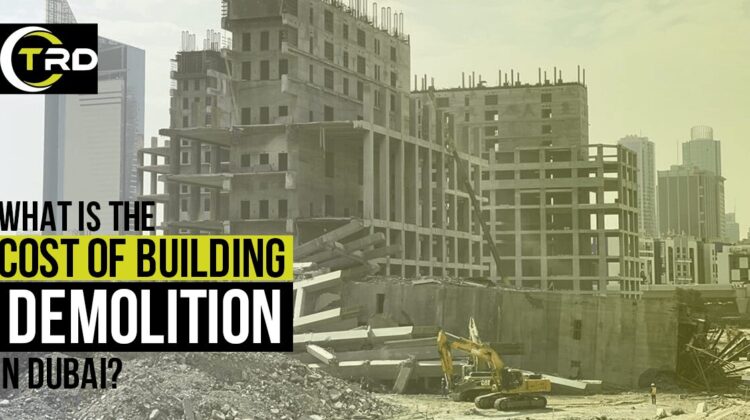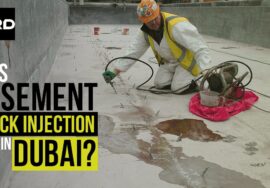
What Is Cost of Building Demolition In Dubai?
Dubai is currently experiencing one of the most rapid transformations in its landscape. It is a dynamic environment characterized by skyscrapers, epitomizing modernity and rejuvenation. The construction industry of Dubai operates with a framework involving innovation, the latest market trends, regulation, and most importantly the commitment to create iconic buildings and structures.
Before diving into the cost of building demolition, let’s first get hold of the demolition process and how it is accomplished.
What is Demolition?
Demolition involves the controlled dismantling or tearing down of the structure or the building. This process is carried out for the modification of the old structure, making new structures, removing unsafe or obsolete structures, or repurposing land for different uses.
This whole process can be achieved by different techniques and procedures. It can be done through different methods, including mechanical means such as using wrecking balls, excavators, or bulldozers, as well as through controlled explosions in the case of larger structures. Demolition is a fundamental aspect of urban development and construction projects worldwide.
How the Demolition Process Is carried out?
The process of Demolition requires careful planning, ensuring all necessary safety measures, and minimizing the environmental impact along with following the relevant rules and regulations. The exact methods used can vary based on the type of structure, size, location, and environmental conditions.
The first and foremost step of this process is to make a plan for the demolition contractors in Dubai following the sequence and conduct the necessary assessment. A thorough examination of the site such as neighboring structures and accessibility is also a part of this procedure. Ensure regulatory measures such as compliance with local building codes, and safety regulations, and obtain necessary permits. Also, evaluate and develop strategies for environmental impacts. Necessary permits and approval from the local authorities have been obtained along with undertaking the proper assessment of the site that has to be demolished.
Another step is to evaluate the structural integrity and the material that is used along with the issues that are needed to be addressed. After the comprehensive analysis, determine the demolition method based on the structure’s integrity. This involves a detailed analysis of the building’s materials, determining their composition and potential for recycling. Structural engineers are often engaged to assess load-bearing elements and identify any structural weaknesses that may impact the demolition process. This step ensures that the most effective and safest methods are employed during the subsequent phases.
Safety is a top priority in any demolition project, and this includes the removal of hazardous materials. Specialized procedures are implemented for the safe removal and disposal of substances such as asbestos, lead, or chemicals. Certified professionals are instructed to handle these hazardous materials, ensuring compliance with environmental regulations and minimizing health risks to both workers and the surrounding community.
Another step is the utilities’ disconnection. Before the actual demolition begins, utilities such as water, gas, electricity, and telecommunications must be safely disconnected. Coordination with utility providers is essential to ensure a smooth and efficient process. Temporary service diversion may be arranged to maintain essential services for neighboring areas during the demolition phase.
Demolition involved using advanced and high-reach equipment to dismantle the structure systematically. In cases of larger structures, controlled implosion using explosives may be employed. The choice of method depends on the specific characteristics of the structure and the surrounding environment. Precision planning is crucial to ensure the safety and success of the demolition.
The use of cutting-edge technologies adds value to the performance and ultimately enhances the results of the demolition process. Separating materials for recycling is a key aspect of responsible demolition practices. After conducting the final cleanup and recycling of the separated material, the site is prepared to be modified or reconstructed.
Factors Affecting the Cost of Building Demolition
There are various factors that affect the cost of building demolition process. It includes the size and type of the structure, location, area measurement that is to be demolished, equipment, and resources. Moreover, the type of material that is to be used for reconstruction or modification.
Cost also varies from company to company depending on the terms and conditions they have and the services that they are offering. The range could differ from 30 to 55 AED. This range can vary based on the conditions and specifications. The typical cost range for commercial demolition is between $4 to $8 per square foot across the nation. To estimate the demolition costs, simply multiply the square footage with a dollar amount within that range.
The cost of interior demolition ranges from $2 to $8 per square foot, or an average of $1,000 to $5,000 for a complete demo project. The actual cost depends on the extent of the demolition work, such as removing a single wall or floor, demolishing a room, or gutting the house down to the studs. Generally, an interior demolition contractor charges $40 to $80 per hour for their services.





